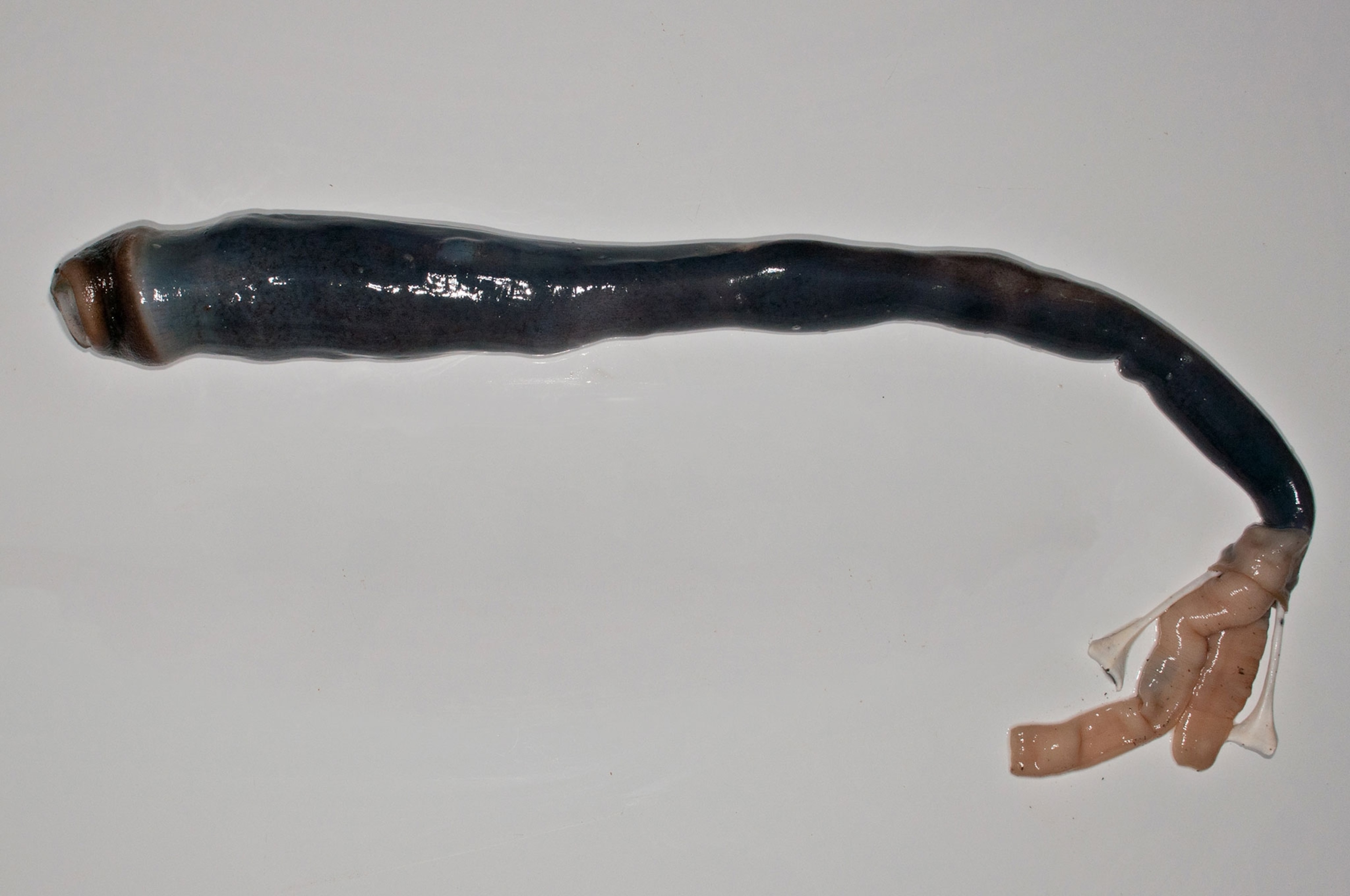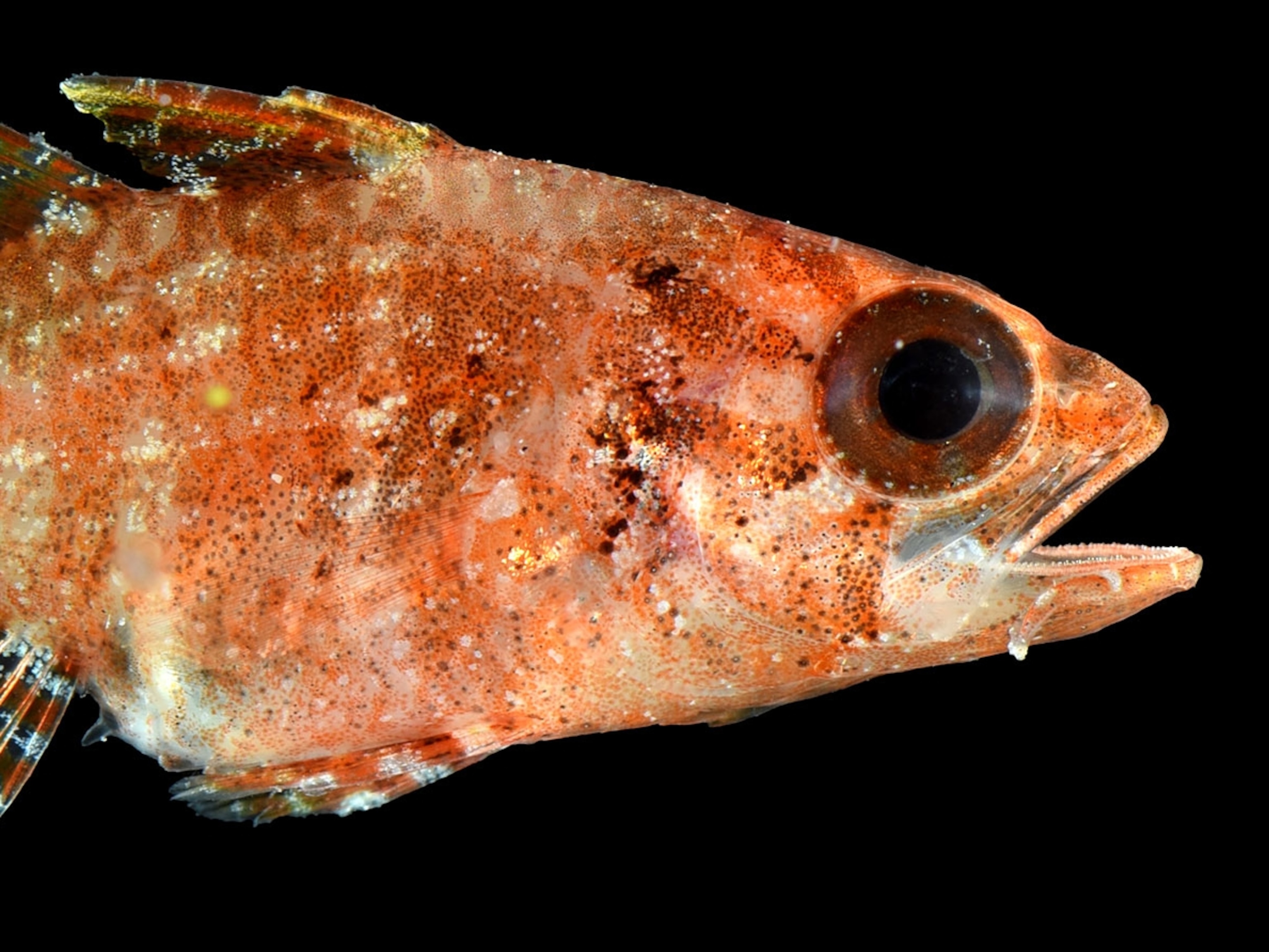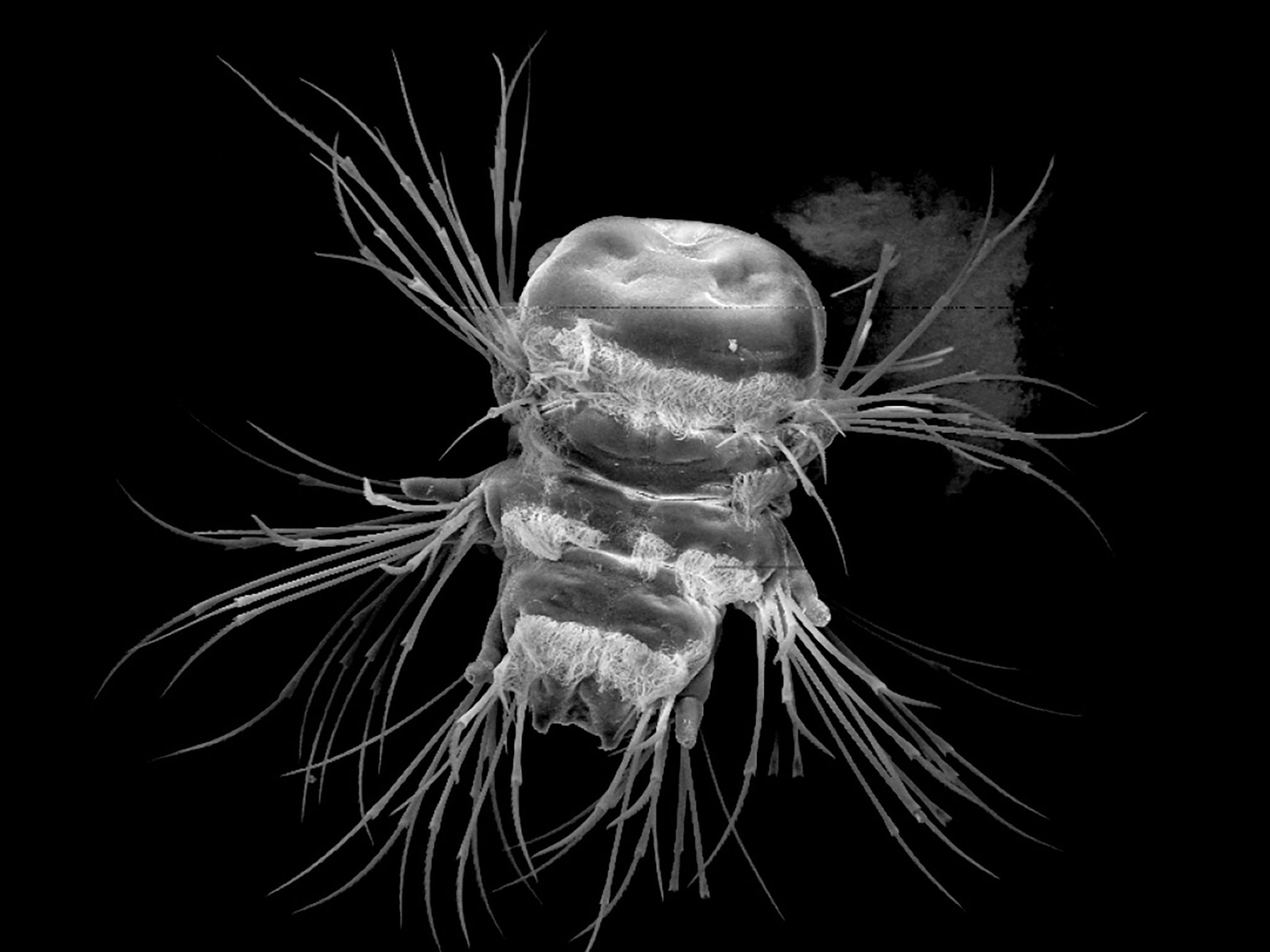Watch: Bizarre Deep-Sea 'Worm' As Long As an Arm Revealed
Scientists studying the giant shipworm for the first time made a truly strange discovery.
For the first time, scientists have studied a long, black, mud-dwelling creature called a giant shipworm. Though these worm-like creatures are common marine pests, eating wood from oceangoing vessels, very little is known about the biggest and rarest species, Kuphus polythalamia.
A documentary tipped off an international team to the location of several giant shipworms in a dank, sulfurous lagoon off the Philippines. The mollusks were lodged headfirst in the muck, with only their hollow, stick-like shells poking out. (See more pictures of strange-looking sea creatures.)
Team leader Daniel Distel, a marine biologist at Northeastern University in Boston, plucked a specimen from the stink and packed it into a section of white PVC pipe, transporting it live several thousand miles to the lab of University of Utah medicinal chemist Margo Haygood.
“Seeing Kuphus for the first time was a highlight of my career. The animal has a mythical status—it’s like a unicorn,” says Haygood.

As Distel pulled the glistening, pulsating Kuphus out of its three-foot-long shell, “it just kept coming and coming,” Haygood recalls, until a shipworm the size of a baseball bat lay on the table.
Haygood immediately noticed that the shipworm’s mouth was capped, which means it couldn't eat. She also knew that Kuphus, the biggest known bivalve, can't eat wood with its head always buried in the sand.
“If it’s not eating, then what the heck is it doing?"
Bacteria Chefs
With her expertise in marine microbiology, Haygood immediately guessed that bacteria living on the giant shipworm were turning hydrogen sulfide into carbon, essentially preparing a constant supply of food for the shipworm.
It wasn’t that far of a leap—all shipworm species rely on symbiotic bacteria living in a special organ in their gills to break down the indigestible cellulose found in wood. (Also see "Deep-Sea Ghost Shark Filmed Alive In Ocean For First Time.")

What's more, the deepest parts of the ocean contain little oxygen, so many microbes breathe sulfur instead, which is especially abundant near the deep-sea vents where Kuphus was found.
Sure enough, when Haygood and colleagues euthanized and dissected the Kuphus specimen, they found a sulfur-breathing species of microbe called Teredinibacter turnerae living within in the cells of its gills, according to the study, published April 17 in the journal Proceedings of the National Academy of Sciences. The team also discovered Kuphus's internal digestive organs were shrunken, as they're no longer needed to digest food.
The team still isn’t sure whether Kuphus gets its food by digesting whole bacteria or absorbing bacterial waste products. They also don’t know where else in the world the giant shipworm lives.
But one thing is clear: The new study shows nature's incredible problem-solving abilities, says Nancy Treneman, a marine biologist at the Oregon Institute of Marine Biology who wasn't involved in the study.
“You don’t even have to eat," she says. "How cool is that?”
Follow Carrie Arnold on Twitter.





